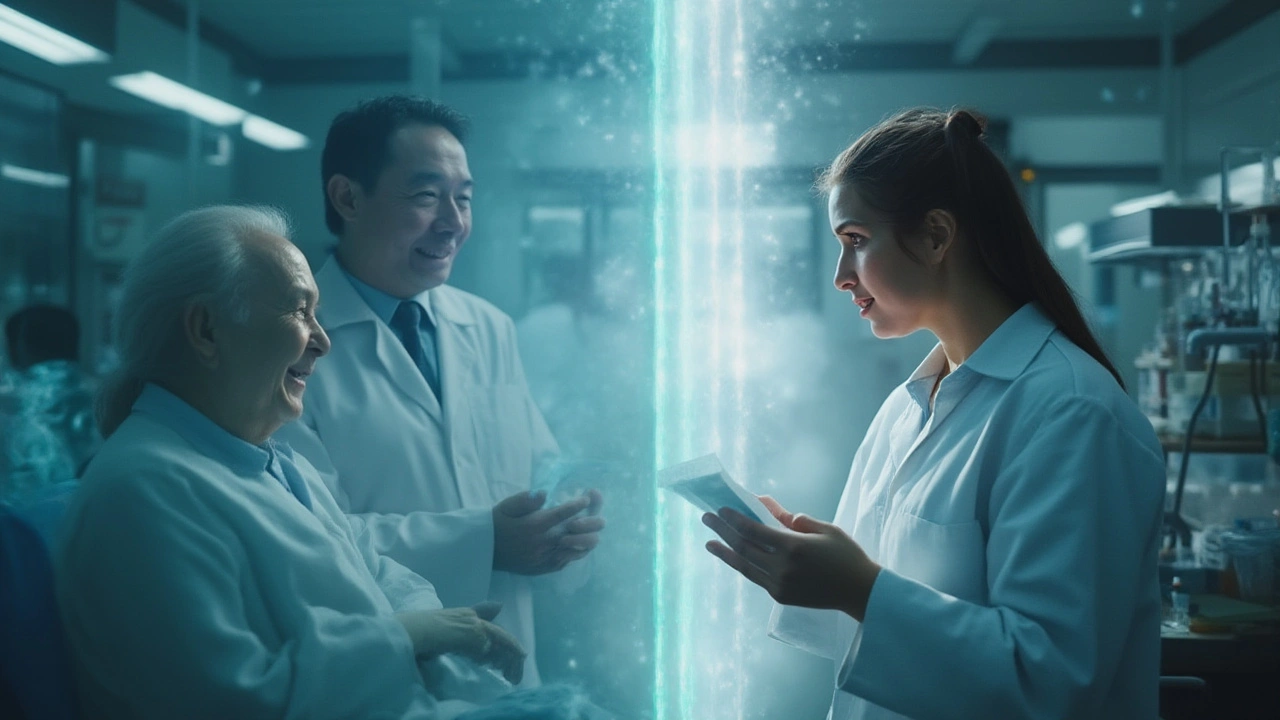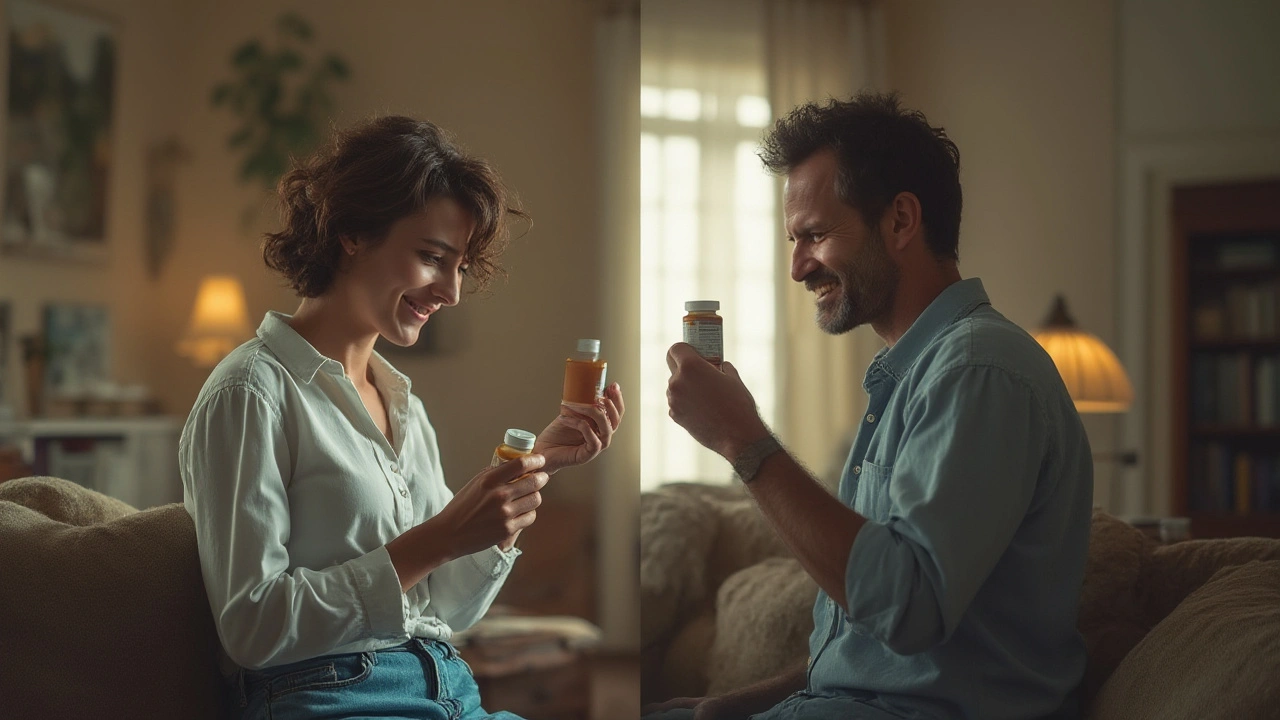Placebo and Nocebo Effects: How Your Mind Influences Medicine

Picture this: a sugar pill, given in a crisp, clean package, and a doctor’s reassuring smile. No active ingredient—just belief. Yet somehow, aches fade and moods brighten. Sounds unreal, right? But this isn’t science fiction. The placebo effect is so powerful it can turn fakes into miracles. Flip the coin, and you get its shadow—nocebo. Here, worry and doubt crank up pain, nausea, or even side effects, all because the mind expects trouble. If that seems wild, the medical world agrees—it’s a puzzle they’re still piecing together.
Placebo: The Power of Expectation
Think of the last time you took a pill for a headache. Relief is what you’re after, sure, but sometimes it kicks in before science says it should. That’s your brain and body working overtime. The placebo effect isn’t just a cool quirk; it can be measured. In 2021, a study published in "The New England Journal of Medicine" found that for certain painkillers, up to 35% of people felt relief with a placebo. That’s not ‘just in your head’—brain scans show real shifts in areas connected to pain and pleasure. Neurotransmitters like endorphins even start flowing, which are the same chemicals your body releases when you eat chocolate or fall in love.
Doctors have known about this since the World War II days, when morphine ran out on the battlefield. Nurses gave saline shots instead. Years later, Harvard School of Medicine's research showed that open-label placebos—where patients know they’re taking a fake—still worked for things like irritable bowel syndrome. That’s wild, right? No secrecy, just expectation, and people feel better.
Why does this happen? Our brains are wired for stories and rituals. A medical setting, a white coat, and a confident voice tell your subconscious: "Healing is about to happen." Your body listens. The belief doesn’t just boost mood; it kickstarts your own internal pharmacy. Think of your brain as the control center. With the right prompt, it tweaks hormones, immune responses, and even blood pressure.
It’s not just about pills, either. Sham surgeries show big improvements. One famous knee surgery experiment split arthritis patients into three groups: real surgery, fake surgery, and simple flushing of the joint. Three years later, all groups reported similar improvements. That turned orthopedics on its head. The bottom line—belief changes biology.
Nocebo: The Downside of Doubt
If the placebo effect shines a spotlight on hope, the nocebo effect creeps in with dread and anxiety. Don’t underestimate it. Just knowing about possible side effects can make you actually experience them, even if you’re swallowing a sugar pill. One clever experiment in Germany gave volunteers pills they were told could cause headaches; a whopping 50% developed headaches, compared to 10% who weren’t warned. The kicker—they all took the same harmless tablet.
Nocebo can show up anywhere medicine walks in. Remember that time you read a drug label and started feeling woozy soon after? That’s your mind doing what it’s told. This isn’t a trick for the gullible—it’s wired into how we process danger. When doctors warn of rare or dramatic side effects, rates for those side effects climb, even in placebo groups in clinical trials.
The physical roots run deep. Stress from fear ups levels of cortisol, which equals more pain, nausea, and pretty much everything you want to avoid. Studies at the University of Turin found that just expecting pain made nerve cells fire as if the pain was already happening.
Then there’s cultural influence—some populations are more sensitive to certain symptoms, and previous bad medical experiences can turn even a harmless pill into a minefield of side effects. If you’ve ever dreaded a dentist’s visit and felt sick before you got to the chair, you know how this feels. It’s part of why nocebo can quietly shape whole clinical studies, muddying the waters of what works and what’s just suggestion gone wrong.

The Brain Behind the Magic
Peel back the lid on the placebo and nocebo effects, and it's plain to see—what you believe literally rewires your brain. Placebo triggers reward circuits, lighting up places like the prefrontal cortex and the nucleus accumbens. That’s the same part that handles pleasure from food, money, or even love. Endorphins and dopamine—the chemical celebrities of well-being—get released, not only making you feel good but also dulling pain.
The nocebo effect, on the other hand, cranks the volume on negative emotions. The expectation of pain or illness activates the insula and anterior cingulate cortex, which process both pain and fear. Cortisol spikes, heart rate goes up, and you’re caught in a body-wide alarm system. Some studies have even recorded increases in inflammation markers in people who only thought they were getting sick.
Here’s a quick visualization of how these effects differ in drug studies:
| Effect Type | What Triggers It | Brain Response | Common Outcomes |
|---|---|---|---|
| Placebo | Positive expectation, rituals, trust in treatment | Endorphins, dopamine, reward pathways | Pain relief, improved mood, better outcomes |
| Nocebo | Fear, anxiety, negative expectation | Cortisol, insula activation, stress pathways | Increased pain, new symptoms, drop-outs |
What’s amazing—even when someone knows they’re getting a placebo, the show goes on. Brain scans pick up activity just from the routine of treatment. Kids respond more to colorful pills and sweeter syrups; adults get better results from treatments wrapped in plenty of medical packaging and technical words. If you ever thought, “It’s all in my head,” you were only half right—it’s also in your blood, nerves, and immune system.
Impacts on Drug Trials and the Real World
Pharmaceutical companies face a wild ride with both placebo and nocebo. In the 1990s, placebo response rates in depression trials hovered around 30%. These days, some studies report 50%—meaning half of those in a trial feel better from expectations alone. That makes it much trickier to prove a new drug is genuinely effective.
This isn’t just a problem in depression. Pain, allergies, even Parkinson's disease show huge placebo swings. Drug trials have to use "blinding"—where neither patient nor doctor knows who gets the real thing. But sometimes, the side effect profile gives it away. Drugs with a bitter taste or itching side effects blow the blind, and both placebo and nocebo effects slide in.
Nocebo, meanwhile, explains why so many folks quit their meds. In one famous stat from the British Medical Journal, nearly 20% of people in statin trials stopped their pills because of muscle pain—even if they were only on a placebo. It’s enough of an issue that some drug labels now warn doctors to be careful how they discuss risks.
Here are a few tips for patients and doctors navigating this maze:
- Read drug information, but don’t panic at every possible side effect. Rare events get listed, but your personal risk is usually way lower.
- Trust your healthcare team, but if something doesn’t feel right, speak up. Sometimes, switching how side effects are presented—focusing on positives instead of doom—changes how you feel.
- If you’re nervous about medication, discuss those concerns openly. Studies show anxiety magnifies nocebo responses, but reassurance and honest communication shrink them.
- Doctors can use positive framing (“Most people tolerate this very well!”) to lower nocebo rates, without hiding real risks.
- Track your symptoms, but watch for the mind’s power to amplify what’s already there.
It’s not just trials. Hospitals harness the placebo effect in daily care: colored pills work better for some symptoms (red for energy, blue for sleepiness), bigger pills seem more powerful, and even the way you get a treatment—a shot, a pill, a lotion—changes your response. If you ever choose between brands because one just "feels" better, your brain is working hard behind the scenes.

Turning Knowledge into Power
So, what should you do with all this? Don’t ditch skepticism, but don’t ignore the mind’s sway over medicine. Patients who believe treatments will help tend to stick with their plans, and they really do get better results. It’s a partnership between what you swallow and what you think about it. If you ever feel side effects quickly, or swear by that familiar headache pill, you’re not alone; your expectation is a tool.
Here are some ways to work with the placebo and nocebo forces in everyday life:
- When starting a new medication, find out what’s typical, but don’t obsess over rare risks.
- Notice if your symptoms show up before you even take a pill. Sometimes, knowing your own patterns helps you see the mind at work.
- Boost your confidence in your treatment routine with small rituals—set reminders, take pills with a favorite drink, or share your progress with a friend.
- If you're in a trial, trust the process but keep honest notes. Reporting what you feel (good or bad) helps science untangle real effects from expectations.
- Don’t blame yourself for a strong reaction—your brain is built for this. Use it as an extra tool in your health toolbox.
Placebo and nocebo effects flip the script on what it means to "take medicine." They turn treatment into a mental and physical event. So next time you pop a pill or sign up for a trial, remember you’re bringing more than your body. Your mind’s at the table too, changing the odds in ways no prescription label will ever admit. Now, that’s a medical revolution hiding in plain sight.